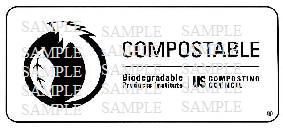|
Mainland High School
Lord of the Trash Rings: ISTF 09-2004 |
||||||||||||||||||||||||||||||||||||||||||||||
|
Home
Introduction Contest Components One Two  Product Product
Three Background Environmentalism History of Plastics Marine Laws Plastic Properties Pollution Laws Research Groups The Oceans Waste Management Project Assessment Team |
A Brief History of Plastic
Plastic is any
of a large number of
synthetic or natural organic materials (such as petroleum, resins, cellulose,
and starches) that have a polymeric structure and can be molded when soft and then
set. In its finished state plastic usually contains plasticizers, stabilizers, fillers,
and/or colorants.
3M's Richard Drew Inducted Into National Inventors Hall of Fame. Scotch® Tape: An innovation that stuck A Concise Exposition of the Origins, Uses, Legal Issues, and Supplantation of Vulcanized Rubber Denture Base Material http://dlt2010.com/uploads/Dental_Materials_Paper_-_FINAL_DRAFT.pdf Advanced Flexible Dielectric Substances http://www2.dupont.com/Kapton/en_US/assets/downloads/pdf/fpc-tab.pdf Aerospace http://www2.dupont.com/Kapton/en_US/uses_apps/aero/mars_rovers.html ASTM D6400 - 04 Standard Specification for Compostable Plastics http://www.astm.org/Standards/D6400.htm ASTM D6868 - 03 Standard Specification for Biodegradable Plastics Used as Coatings on Paper and Other Compostable Substrates http://www.astm.org/Standards/D6868.htm Automotive http://www2.dupont.com/Kapton/en_US/uses_apps/auto/index.html Biodegradable Products Institute http://www.bpiworld.org/BPI-Public/Program.html Biopolymers http://www.greenplastics.com/reference/index.php?title=Biopolymers#Biopolymers By Design: World War II, Plastics, and NPE http://www.plasticstoday.com/imm/articles/design-world-war-ii-plastics-and-npe Charles Goodyear http://www.invent.org/hall_of_fame/68.html Corn Plastic to the Rescue http://www.smithsonianmag.com/science-nature/plastic.html?c=y&page=2 Enviroliteracy.org: Plastics http://www.enviroliteracy.org/article.php/1188.html Grafix Plastics http://www.grafixplastics.com/mylar_types.asp Greenplastics.com: Green Plastics http://www.greenplastics.com/reference/index.php?title=Green_plastics Hale Charch: 1927 http://www2.dupont.com/Heritage/en_US/1927_dupont/1927_overview.html History of Cellophane Films http://inventors.about.com/od/cstartinventions/a/Cellophane.htm History of Nylon Stockings http://inventors.about.com/od/nstartinventions/a/Nylon_Stockings.htm History of Polyimide Film" http://www.google.com/search?q=history+of+%22polyimide+film%22&hl=en&sa=G&tbo=p&rls=com.microsoft:en-us&tbs=tl:1,tll:1960,tlh:1969&ei=QqmBS5O1D9KztgerrbSTBw&oi=timeline_histogram_main&ct=timeline-histogram&cd=2&ved=0CHUQyQEoAg History of Scotch Tape http://inventors.about.com/od/sstartinventions/a/Scotch_Tape.htm History of Vinyl http://inventors.about.com/od/sstartinventors/a/Vinyl.htm Hyatt, John Wesley http://www.enchantedlearning.com/inventors/indexh.shtml Inventors.about.com: The History of Plastics http://inventors.about.com/od/pstartinventions/a/plastics.htm Leo Hendrik Baekeland - Bakelite http://inventors.about.com/library/inventors/blbakerlite.htm Plastics Recycling Information Sheet http://www.wasteonline.org.uk/resources/InformationSheets/Plastics.htm Plastic Recycling Programs - Boon Or Bust? http://www.allsands.com/history/objects/plasticrecyclin_rkw_gn.htm Polyester - PET http://inventors.about.com/library/inventors/blpolyester.htm Polyimide(PI) Plastic Resin http://www.ides.com/generics/PI.htm Polymerplastics.com: History of Plastics http://www.polymerplastics.com/history_plastics.shtml Polystyrene http://pslc.ws/mactest/styrene.htm Polyurethane http://inventors.about.com/library/inventors/blpolyurethane.htm Roy J. Plunkett http://inventors.about.com/gi/dynamic/offsite.htm?site=http://www.invent.org/hall%5Fof%5Ffame/1%5F1%5F6%5Fdetail.asp%3FvInventorID=121 Rubber: Natural Rubber http://www.lycos.com/info/rubber--natural-rubber.html Saran Wrap http://inventors.about.com/library/inventors/blsaranwrap.htm Scotch Brand Transparent Tape Turns 60; Invented to Seal Food Wrap, Its Uses Today Are Countless. http://www.highbeam.com/doc/1G1-8342794.html Scotch Tape: An Innovation That Stuck http://portal.acs.org/portal/acs/corg/content?_nfpb=true&_pageLabel=PP_ARTICLEMAIN&node_id=882&content_id=WPCP_007574&use_sec=true&sec_url_var=region1&__uuid=d576fff1-d5f6-40c2-bf92-34ea1c036774 Teflon - Roy Plunkett http://inventors.about.com/library/inventors/blteflon.htm Thefreedictionary.com: Plastic http://www.thefreedictionary.com/plastic The Myths of Biodegradation http://www.bpiworld.org/Default.aspx?pageId=190439 The Nobel Prize in Chemistry 1953 http://nobelprize.org/nobel_prizes/chemistry/laureates/1953/ Tvo.org: Why Are So Many Things Made of Plastic http://www.tvo.org/iqm/plastic/gas.html# Waldo L. Semon http://www.invent.org/hall_of_fame/131.html Wallace Carothers - History of Nylon http://inventors.about.com/od/nstartinventions/a/nylon.htm Who Invented Styrofoam? http://inventors.about.com/od/pstartinventions/a/styrofoam_2.htm |
|||||||||||||||||||||||||||||||||||||||||||||













